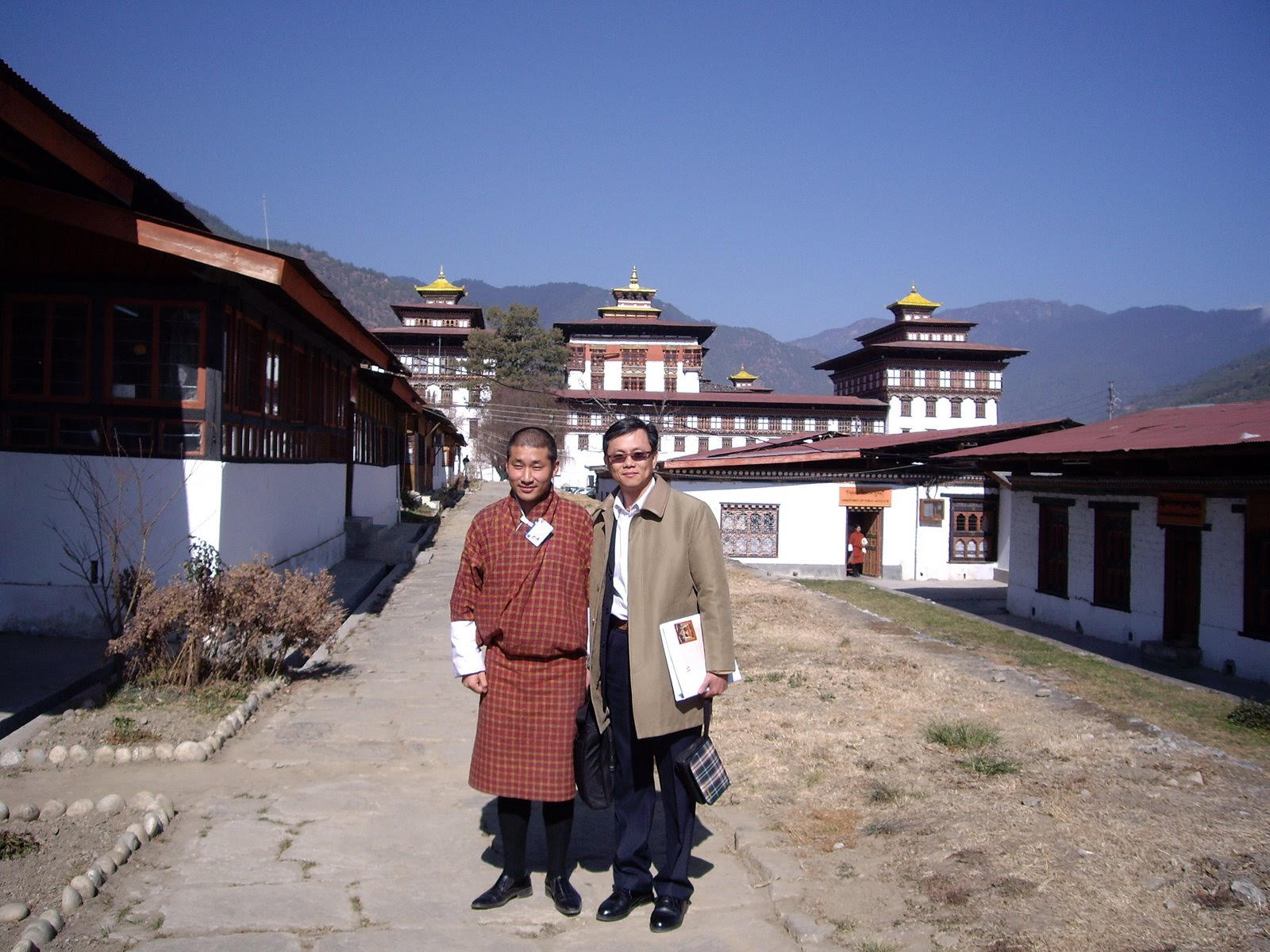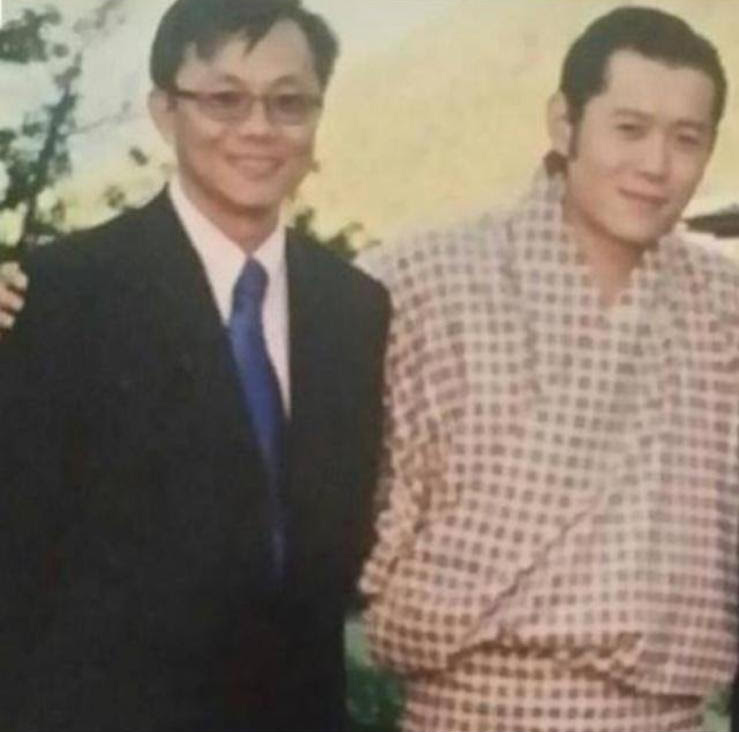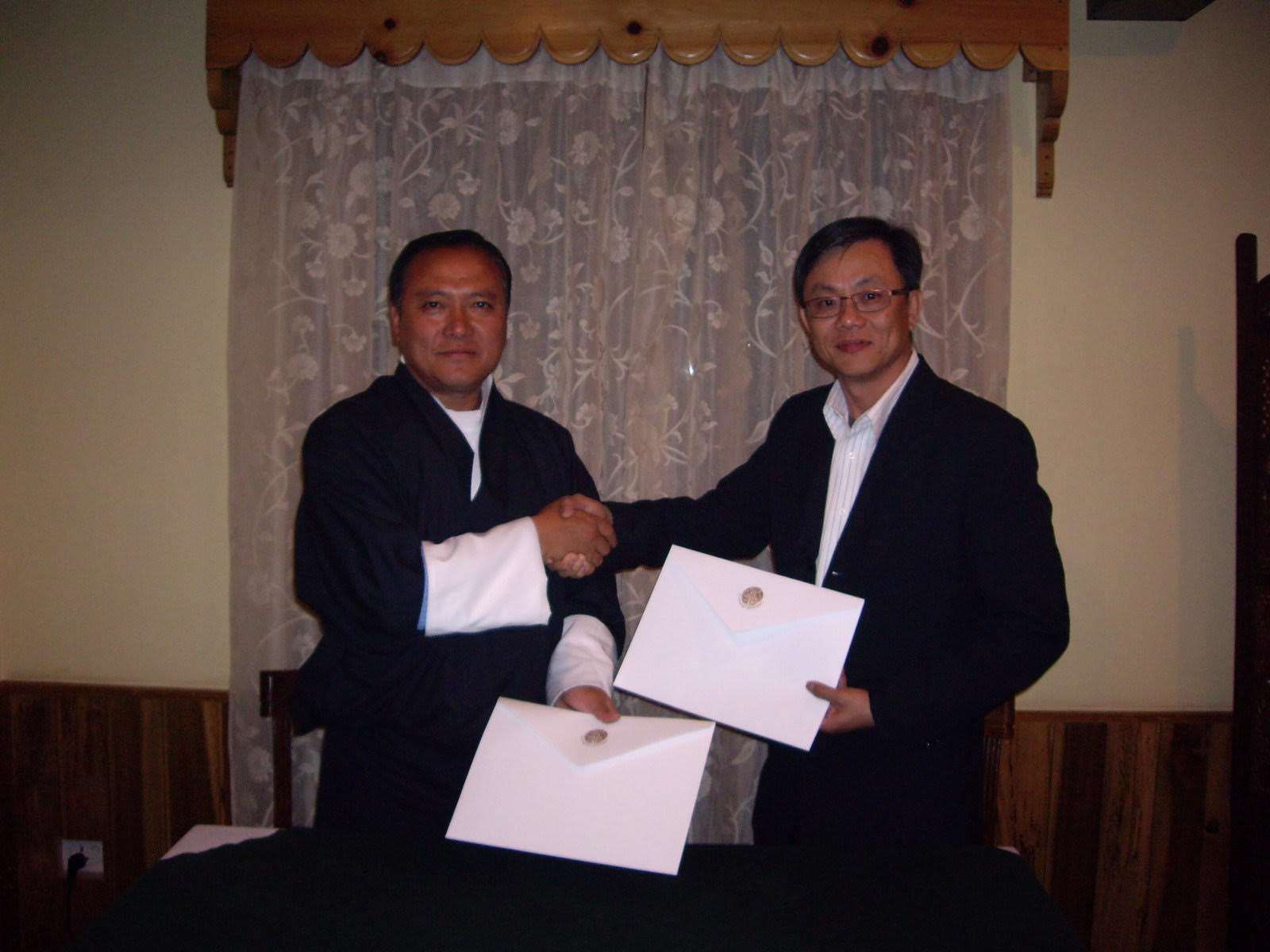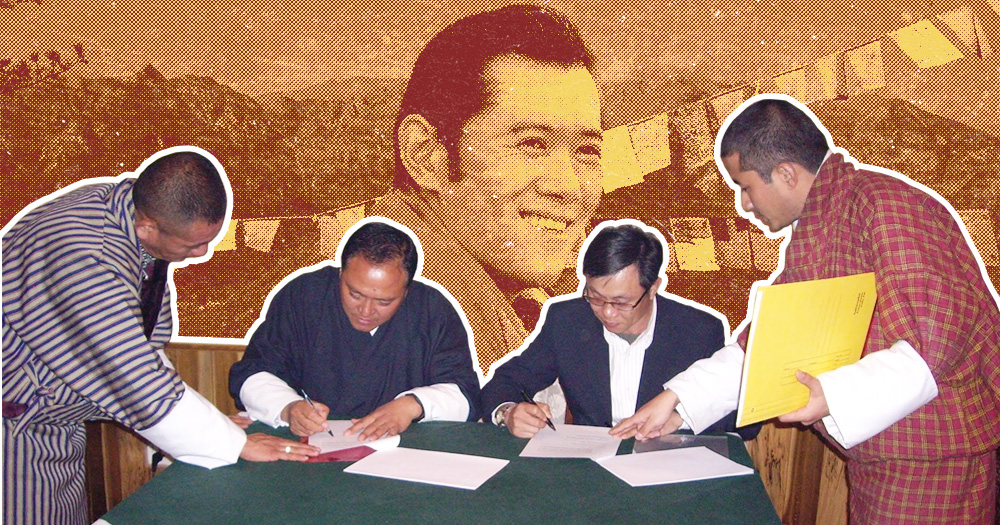Follow us on Telegram for the latest updates: https://t.me/mothershipsg
PERSPECTIVE: Singapore's development story — commonly told as the tale of a fishing village that became a first-world city — is one that continues to be attractive to other countries hoping to take a similar leap.
Advising officials from these countries and helping them implement the applicable components of the Singapore model has taken up the better part of Ng Hua Chong's 34-year career.
The leading consultant from Singapore Management Consultancy describes himself as a specialist in national infrastructure and development projects at a government level.
Speaking with Mothership, Ng shared how that specialisation led him to the small hidden Kingdom of Bhutan, having an audience with its monarch — King Jigme Khesar Namgyel Wangchuck — and how Singapore's success was passed on to another country.
By Ng Hua Chong, as told to Andrew Koay
In 2006, the Singapore Government decided to set up a business to respond to requests from foreign officials interested in our development.
During that time, a lot of foreign countries actually came to Singapore to learn about our experience of building a nation from a small little red dot.
As these engagements required resources, the Government decided to set up a private company that would be able to handle these requests and to recover some of the costs.
Therefore, the Ministry of Trade and Industry (MTI) and Ministry of Foreign Affairs (MFA) set up a company called Singapore Corporation Enterprise in 2006. It subsequently began operations in 2007.
I was one of the three pioneer directors that ran the company together with its CEO.
Having previously worked in MTI's International Business Directorate where I ran the China desk, I was put in charge of Asia, less the Middle East.
How it worked was that when officials from other countries came to Singapore with requests or enquiries about our development experience, MTI or MFA would channel them to us.
We provided consultancy services to them, and then signed projects using the Government-to-Government arrangement.
We would then bring these projects back to Singapore and give them to companies that had already implemented similar projects here.
I worked as a business development director as well as a project director. It meant that I had to go find projects for Singapore in Asia, while also following the project through to completion to make sure that projects were implemented successfully.
First impressions of Bhutan
 Image courtesy of Ng Hua Chong
Image courtesy of Ng Hua Chong
During this time, I had a meeting with a man from Bhutan — Dasho Karma Tshiteem — in Singapore, who went on to become the country’s Chairperson of the National Service Core Working Group.
After hearing what I had to say to him about Singapore’s nation-building experiences, he felt that there were a lot of opportunities to collaborate.
He sent me an invitation to Bhutan to conduct an analysis and submit a report about the country.
The first time I travelled to Bhutan was in 2008. I was really awestruck by what I saw.
As the plane approaches their airport, you have the whole range of Himalayan mountains just next to you, on your left — snowcaps and everything.
As you get closer you can see the shepherds and their sheep walking around and grazing.
It’s really quite an interesting flight.
When I landed I was a bit surprised.
The airport has a single runway; after landing, planes will go to the end of the tarmac before making a U-turn.
Once you disembark, you walk into their wooden building, that’s where the customs officers were.
It's a no-frills building — no air conditioning, nothing. Everything is wooden, from the doors to the walls.
From the airport, the road that we travelled on was challenging. It took us almost one hour to go from the town of Paro — where the airport is — to Thimphu, Bhutan’s capital.
But the scenery along the route took my breath away.
On the left and right were all sorts of trees in all sorts of colours; orange, green, red — everything against a big blue sky. It was picture-perfect.
Halfway along the trip, they stopped to let me look at a temple which was nearby a river. The water was a few feet deep and you could see fish — rainbow trout — swimming inside.
"You better speak to His Majesty directly"
The hotel we stayed in, Hotel Dragon Root, was the only one equipped with a lift. Typically, aged citizens who visit the capital stay at this hotel, especially if they have problems climbing the stairs.
For the few days that I was there, I met all the different Secretariats (similar to a ministry). It was like they were lining up outside the meeting room, and as soon as I finished speaking to one, the next one would come in.
They asked about a lot of different things, wanting to tap on our knowledge of topics like economic development, investment policy, education reform, tourism and international trade.
So briefly, I shared with them what I know based on what I’d learned from talking to colleagues in Singapore.
One of the secretariats I met was a gentleman called Dasho Penjore; Dasho is a title granted by the King, sort of like a Datuk in Malaysia.
Dasho Penjore was at the time the Zimpone, a position much like the head of Secretariats, serving under His Majesty — who was actually still a prince in 2007, having yet to take over from his father, the fourth King.
After I’d spoken with all the Secretariats, they asked if I could do a presentation for Dasho Penjore and arranged for me to do so.
When he heard what I had to report on from my analysis of Bhutan, he told me: “I think you better speak to His Majesty directly. The ideas are so unique that I don’t think I can make a decision directly.”
Softly but firmly
The next day, Dasho Penjore brought us to the palace garden where the King would take his breakfast.
We walked along a nice path which was nearby a beautiful river. It was very shallow but broad and had a lot of flowers lining the riverbed.
Eventually, we came to a yellow pavilion.
Atop a platform, seated on a yellow throne was His Majesty.
Before meeting the King, of course I was nervous. I mean I'd never met a King before. I told myself: “Okay calm down, I'm representing Singapore and I'm sharing about our experiences.“
I reminded myself that if I stay within the boundary of the subjects that I’m confident with, I should be able to deliver the key information to the King
When the King saw me, he came down from his throne, shook my hand and said: “Mr Chong, welcome! Finally, I get to see you.”
His Majesty was a very friendly and logical man. He spoke softly but very firmly.
We were meant to have only a 15-minute audience with him, but instead, our meeting stretched to about two hours; His Majesty cancelled a few of the meetings that were lined up that day to carry on talking with me.
 Hua Chong (L) and King Jigme Khesar Namgyel Wangchuck. Image courtesy of Ng Hua Chong,
Hua Chong (L) and King Jigme Khesar Namgyel Wangchuck. Image courtesy of Ng Hua Chong,
Representing Singapore
Amongst the topics His Majesty was interested in discussing were our education policy, Infocom infrastructure, how Singapore had used IT to advance the country’s development.
In particular, he wanted to know how Singapore moved up from a very low-GDP, low-tech economy to where we are today.
I told His Majesty that it was because of how we developed our human resources.
After my return to Singapore, I was soon invited back to Bhutan — this time, to sign two projects.
The first was an education project, in which we agreed to provide a training syllabus for teachers — all the way from primary school to graduate school training.
We brought over Educare Co-operative Limited, an extension of the Singapore Teachers Union to Bhutan. Together with Educare, we had a retired NIE dean and a few educators that were retired ex-directors at MOE, helping to train teachers in Bhutan.
The second project sought to reform Bhutan’s information technology systems.
Bhutan was very late to adopt modern technology. For example, it wasn't until 1999 that the country had its first television.
As part of our work to help the country modernise its processes, we brought over a Singapore IT company to show them how to use the internet to communicate information to their citizens.
We also helped them to build their IT infrastructure — including a data centre — and digitised their citizenship records, including assisting with a census of the whole country, which at the time was about 500,000 people.
Those were the two projects that we started, and during the time they were being executed, I travelled to Bhutan very often — about 20 trips.
And every time that I went up, some Secretariats might seek me out for ideas.
I would always try and help them because I represent Singapore and I want to make sure that any country that works with Singapore, the leader feels good about it.
After I left Singapore Corporation Enterprise, I set up my own company, Singapore Management Consultancy (SMC) in 2010.
Under SMC, I continued to support Bhutan in its transformation journey. SMC completed another two projects for Bhutan, the Tourism Master Plan and Education Master plan in 2013.
I believe that our work over the years has enabled Singapore and Bhutan to strengthen and deepen their relationship. I hope that this friendship can be maintained for many years to come.
 Image courtesy of Ng Hua Chong
Image courtesy of Ng Hua Chong
What Singapore can offer the world
Today, some 15 years later, Bhutan — just like Singapore — is continuing its transformation into becoming a smart nation, though more can be done. It also has different challenges than the ones facing Singapore.
For example, 75 per cent of the country is mountainous terrain. It will take time to implement advanced ICT infrastructures across the whole nation.
What might feel slow for a project in Singapore might be the right speed in another country. If you go too fast and the country you’re trying to help can’t keep up, they might even give up.
We want to make sure that countries who ask for our help would understand the Singapore model and that they adapt and modify it according to their needs.
As I explained to His Majesty, Singapore and Bhutan have certain similarities, and therefore some of the ways that we’ve done things might work for Bhutan as well.
Many developing countries want to know the Singapore model because we are so unique — a small country with basically no resources except humans and we became so developed.
Countries want to know how can they develop without depending too much on their natural resources.
And in this world, not many countries can offer that.
Enquiries for Ng Hua Chong can be directed at [email protected]
If you like what you read, follow us on Facebook, Instagram, Twitter and Telegram to get the latest updates.
